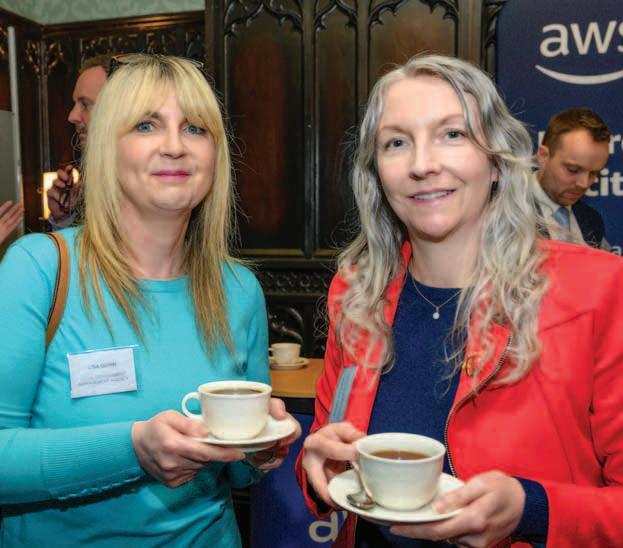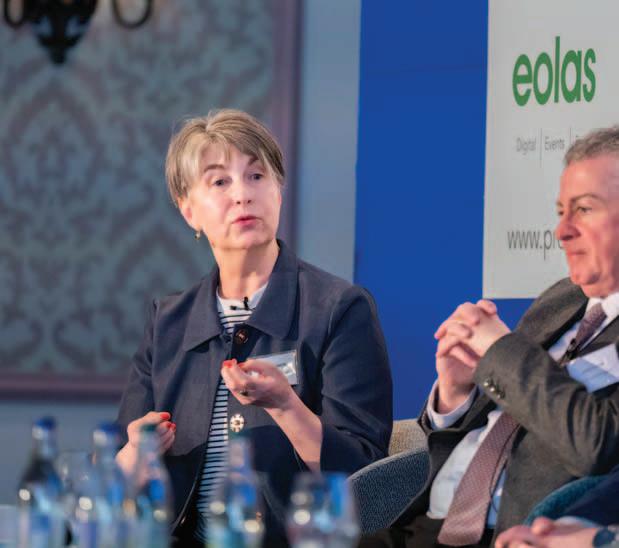








Anne Lannon, Head of Professional Services Portfolio in the Office of Government Procurement (OGP), discusses the potential for transformation under the banners of professionalisation of public procurement, the digital delivery of services, and active market engagement.
The OGP was established in 2014 and is a division of the Department of Public Expenditure, NDP Delivery and Reform, it has three key functions. These are:
1. acting as the State’s national authority for public procurement;
2. acting as a central purchasing body; and
3. leading the delivery of public procurement reform.
The Sourcing and Professional Practice team sits within the central purchasing body function of OGP and establishes national procurement solutions for common requirements across eight categories of spend for the public sector.
To date, the OGP has established 92 central solutions, not including bespoke
solutions for strategically important projects for the State, which for 2023 alone saw competitions with an estimated €3 billion delivered.
Explaining that the OGP has an overarching brief to “shape the future of public procurement”, Lannon highlights a twofold aim. Firstly, influencing the public procurement environment to provide for practice that is transparent, as well as socially, economically, and environmentally sustainable.
Secondly, delivering quality solutions that meet the needs of the OGP’s clients, deliver value for money for the taxpayers, and deliver on government priorities.
“The challenge for us in sourcing as a central purchasing body is to deliver government policy through our
solutions and also to influence more spend from our client base. In 2024, we expect to deliver at least another €3 billion in procurement competitions,” says Lannon.
“Of the 92 central solutions that we have in place we have a very ambitious renewal programme for 51 of those solutions.”
Importantly, a significant number of those projects will include the facility for direct drawdown, with a twofold benefit of enabling clients to access services readily and easily, while also cutting down on the administrative time involved in running ‘mini competitions’.
“It is equally important for the OGP because approximately 75 per cent of sourcing resources are devoted to delivering mini competitions for our
clients. What we are trying to do is strike the balance between supporting clients and allowing further autonomy and greater ease of access,” Lannon adds.
Despite this, the OGP expects to deliver between 500 and 600 mini competitions for at least 300 clients over the course of 2024.
Emphasising that professional practice continues to be a well-established priority for the OGP, Lannon points to an operating environment whereby demands on procurement practitioners are increasing constantly, while policy makers are seeking to leverage government spending to contribute to the achievement of broader horizontal policies.
“We need to remain mindful of the fact that as public procurement practitioners, our role is as an enabler. Practitioners alone cannot deliver on policy. We need ongoing involvement of our policy departments, subject matter experts, and the marketplace.
“We need to develop and maintain a strong cohort of professional procurement practitioners if we are to deliver on a challenging, aggressive, and ambitious programme of work,” she says.
Defining the OGP’s unique selling point (USP) as its people, Lannon stresses the value and scarcity of procurement expertise, insisting that it is incumbent on everyone involved to “prioritise the professionalisation of our discipline”.
Procurement as a function is not confined to either the private or the public sector in Ireland as a profession, and Lannon describes the ongoing undervaluation of procurement as a critical function as “very disappointing”.
In seeking to address this, the OGP has established a professional practice unit, responsible for developing and implementing programmes to upskill staff, with both an internal and external focus.
Internally, the OGP’s Training Academy focuses on staff development, and improving capabilities across a range of required skills and competencies. This sits alongside other measures employed in the OGP, including a further education programme, and an in-house mentoring and coaching programme.
Externally, the OGP’s Commercial Skills

Source: OGP
Academy (CSA) provides training for public service managers to gain an understanding of key issues, commercial skills, and best practices in project delivery.
“This is particularly important in the context of delivering on the objectives of the National Development Plan (NDP). To date, the CSA training programmes have had a very significant level of take up,” she explains.
Lannon summarises the OGP’s vision for professional practice improvement as:
• establishing a vibrant community of practicing professionals at various stages across the range of career development;
• building a profession that provides for formal professional qualifications, professional recognition, and continuous professional development;
• creating standards of practice and a code of conduct and ethics; and
• developing professional procurement practice as an attractive career that is fulfilling for the individual, that provides for development, career progression, and, enables talent retention within the procurement profession.
Turning to a further opportunity presented by the digital delivery of services, Lannon says that as practitioners, procurement professionals need to be able to harness the power of digitalisation in their work.
“Embracing and leveraging digitalisation is a key strategic objective for us and the OGP has signalled our ambition by appointing an Assistant Secretary to lead in this important area.”
In 2023, the OGP launched a new eTenders platform to assist with digital delivery, the implementation of building information modelling (BIM) by the OGP’s construction policy unit across several construction policies is also a priority.
However, Lannon recognises the need to focus on providing digital tool sets for practitioner use on a daily basis, such as automating routine process steps to compile reports and utilise the ability to use and reuse content.
“Interestingly, the OGP has established a robotic process automation framework, and we are looking at how we can leverage that internally to automate processes at our service desk end. We expect approximately 50 per cent of the standard type of query that we receive to our service desk is

suitable for automation, and that will allow us to free up staff to focus on other areas of work.
“Importantly, digital tools can also assist our suppliers. It is incumbent on us at all times to make the tendering process as attractive, straightforward, and accessible as we can in our markets. We need to ensure that the tendering process is not of in itself an inhibitor for our suppliers’ ability to participate and compete.”
The third key opportunity raised by Lannon centres on active market engagement, with the OGP recognising the need for better understanding of supplier behaviours.
Dispelling a common misconception that public sector work is always the most attractive to tendering suppliers, she highlights the competitiveness of the current market, adding: “We need to make sure that public sector work remains attractive and be constantly mindful that one of the key objectives of public procurement is to stimulate markets and drive competitions.”
To this end, Lannon points to the publication Circular 5/23 in 2023 as an example of how the OGP is seeking to reduce barriers and increase competition. The circular was designed to further enable SMEs to compete for public contracts and sets out positive measures for contracting authorities to take to promote SME participation.
The OGP places great importance on providing feedback to unsuccessful bidders, believing this feedback to be of value when considering the levels of success achieved by bidders who return for future tenders, and there is a recognition that this approach is helping to ensure the marketplace keeps pace with the OGP’s requirements around green and social considerations, for example.
Lannon is also clear that challenges persist. Citing some market areas, such as cloud, as an example of these, she says that the OGP is continuously working to examine and develop appropriate approaches to seek solutions.
Beyond the three identified “headline opportunities”, Lannon concludes by
outlining a number of smaller, operational opportunities that exist in 2024, including several client- and supplier-facing events aimed at leveraging the OGP’s service experts and key account managers to work on improving engagement with clients and suppliers.
Additionally, in 2024 the OGP plans to pilot an advisory model approach whereby it acts as an advisory procurement expert for clients at the strategic end of the procurement process.
Finally, Lannon outlines that the OGP is working to publish a circular on reporting on the use of central arrangements. “One of our primary objectives is to increase the uptake of our central solutions by clients right across the public sector,” she explains. “A key action arising from the recent memo from the Government is the publication of a circular, which will require government departments and agencies to report on their use of central arrangements, and work is progressing in that regard,” she concludes.
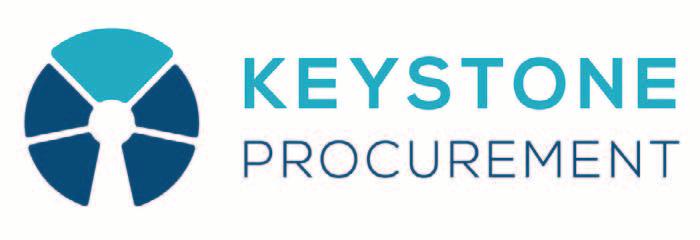

Each procurement, whether constructing hospitals or acquiring specialised software solutions, pose their own specific challenges.
Procuring goods, services or works can be akin to navigating a maze for contracting authorities. This is most acute where they face changing markets or unusual requirements as they get ready for a procurement process.
Market consultation processes are an essential tool that use structured supplier engagement to enhance the knowledge of the contracting authority before they visit the market. Some of the main benefits of market consultations are:
Gaining insight into and understanding of complex requirements: Market consultation proves beneficial for specialised, complex or novel procurement needs. Whether it is for establishing a new contract or revisiting existing ones, engaging with suppliers helps buyers comprehensively understand requirements. For instance, constructing a hospital entails meeting stringent safety, functionality, and efficiency standards. Similarly, acquiring specialised software requires understanding of the functional and
technical specifications as well as any industry related requirements. In such scenarios, market consultation helps the contracting authority to develop better tender documents that enhance the chances of a successful outcome.
Mitigating risks and enhancing planning: Good procurement anticipates risk and plans for it. By undertaking market consultations, organisations gain invaluable insights into market trends, supplier capabilities, and potential pitfalls. This knowledge equips them to proactively identify and mitigate risks, thereby safeguarding against potential disruptions to the procurement process. Whether it is assessing the financial stability of potential suppliers or evaluating the feasibility of project timelines, market consultation provides a foundation for informed decision-making and good risk management.
Building strong relationships: At its core, procurement is a collaborative endeavour. Market consultations offer a platform for authorities to engage with suppliers in a transparent, constructive
manner. Through open communication channels and structured engagements, organisations can gain the trust of the market at large. Consultations flag that the contracting authority is open to suppliers, whoever they may be. This lays the groundwork for successful procurement partnerships built on mutual respect and shared goals.
Market consultation is an essential strategic aspect of procurement. Embracing this proactive approach enables organisations to navigate the complexities of procurement with confidence and clarity. From understanding intricate requirements to mitigating risks and fostering collaboration, market consultation encompasses supplier engagement, empowering authorities to make informed decisions. In an uncertain landscape, market consultation can guide authorities towards effective procurement practices rooted in engagement, transparency, and strategic foresight.
T: 01 485 1280
E: info@keystonepg.ie
W: www.keystonepg.ie nd Reform.
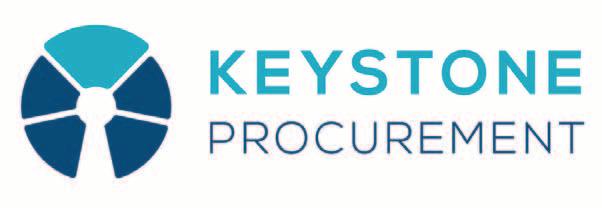

National Director of HSE Procurement, John Swords, discusses the enabling role of procurement in delivering Sláintecare – the State’s 10-year programme to transform our health and social care services.
As the largest purchaser in the State, with responsibility for over one-quarter of the overall health budget (€4.9 billion), procurement has a significant influence on Sláintecare’s ambition to enhance access and performance, ensure timely implementation, and improve public confidence.
Swords is speaking in a transformation context, with six new HSE health regions introduced to replace hospital groups and community healthcare organisations, with the aim of providing
integrated health and social care services for the people in those regions.
This, he states, will be a central component to development of the 2025 Corporate Procurement Plan, which will see central procurement retained but regional needs addressed.
According to Swords, the plan will take account of regional needs, but also build on the shared understanding of the power of collective procurement established over the past decade, as
well as procurement’s role as an enabler of service delivery.
Outlining the framework of the forthcoming five-year strategy, he says: “It will include different demands of the regional executive officers, who will be concentrated on their areas, but that concentration will splinter into two key areas of the local, and the collective.
“HSE Procurement has a role to play in both of those areas,” he states, adding: “Procurement will have a presence in the regions, and report directly into those regions, but will also be heavily reliant on the centre. That centre will include ourselves in health as one collective voice, but also in collaboration with the Office of Government Procurement (OGP).
Swords sets out the four core procurement objectives as:
1. Ensuring supply: Providing continuity of supply; ensuring availability of appropriate quality goods and services where needed, and when.
2. Compliance: Ensuring the HSE and all staff members comply with procurement Directives, legislation, circulars, and other legal requirements.
3. Centre and region: Ensuring that purchasing is carried out in a coordinated and strategic manner that maximises opportunities for savings and improved compliance.
4. Social inclusion and sustainability: Encouraging and stimulating opportunities for green procurement, innovation, social inclusion and participation by SMEs and microenterprises in the procurement process.
Focusing attention on the fourth objective, which centres on green and sustainable procurement, Swords outlines the identification of sustainable procurement as key theme of the HSE Climate Action Strategy 2023-2050. To this end, he says that the forthcoming corporate plan will have a significant emphasis on sustainability, with major changes expected in the award criteria for tenders.
“It is time for doing and not talking,” he states, adding: “Business as usual should be sustainable in both ways.”
“Business as usual should be sustainable in both ways.”
John
Swords, National Director of HSE Procurement
Highlighting work already underway in this regard, he points to a pilot project set to be introduced later in 2024 to develop sustainable skills. The HSE Corporate Procurement Plan highlights a need for suppliers to prepare, and a recent white paper Driving Sustainability in Health Tech Supply Chains through Procurement: An Irish Leadership Opportunity, identifies the upskilling of procurement functions on sustainability as a critical need.
In response, the HSE, HealthTech Ireland, Sustainable Enterprise Skillnet, and 20FIFTY Partners have come together to address this gap with a new pathfinder programme, aimed at providing a longer-term strategic response to talent and skills development in not just the health sector but across multiple sectors in which the Sustainable Enterprise Skillnet operates.
Turning to the implementation of the new IFMS, the national single, national integrated financial management and procurement system for the health sector, Swords recognises that the shift has not come without challenges for both operators and suppliers but stresses the benefits of a move to the centralised management of invoices.
New developments, including a new standard national finance and procurement processes, are being rolled out on a phased implementation basis to all publicly funded health organisations, and will involve changes for people, processes, and technology. Included in the introduction of a mandated, compliant, national procurement process are features like greater use of electronic documentation and more self-service procurement, and Swords says that the streamlined approach will “have many benefits”.
Offering a summary of the evolution of procurement delivery in the HSE, he says: “Sláintecare is a programme of change which is centred on improving patient care. Procurement must play its role in how we adapt our contracts with our suppliers and how we conduct business because doing so will bring many benefits. Those benefits must ultimately be for patients, but can also benefit businesses, particularly as we take a more regional approach to healthcare delivery.
“Collectively, we want to improve access and performance, ensure timely implementation, and improve public confidence, and we can do this through the delivery of an integrated procurement approach for the health sector.”
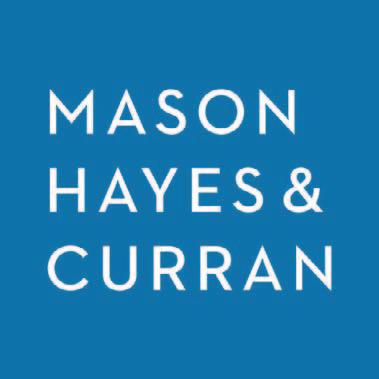


The Department of the Environment, Climate and Communications (DECC) has published its Green Public Procurement Strategy and Action Plan 2024-2027 (Action Plan). Dorit McCann of Mason Hayes & Curran analyses what this will mean for procurements going forward.
Green public procurement (GPP) seeks to procure goods, services and works with a reduced environmental impact throughout their life cycle compared to goods, services and works with the same primary function but with a higher environmental impact. Initiatives in Ireland to date to encourage the use of GPP include:
• The Programme for Government which mandates the inclusion of green criteria for all procurements using public funds within 36 months, i.e. by 2023;
• Circular 20/2019 which promotes the use of environmental and social considerations in public procurement;
• The Environmental Protection Agency’s Guidance for the Public Sector which provides guidance on how to implement GPP; and
• The Office of Government Procurement’s GPP Criteria Search which enables authorities to find and generate criteria relevant to specific procurements.
Despite these initiatives, the EPA reports that only 24 per cent of government department contracts in 2021 used environmental criteria.
The Action Plan contains a commitment to the overall target that all public bodies must include GPP criteria in all tender competitions using public funds, where possible. The Action Plan includes three key principles which contracting authorities must adhere to:
1) Consider environment sustainability when assessing need: Avoiding unnecessary purchases and rethinking how demand can be met, e.g. reusing, recycling, resource sharing;
2) Use GPP criteria in tender documents where available, appropriate, and proportionate: Use of national or EU GPP criteria or criteria based on best practice from other countries or, where no criteria available, use of specific minimum sustainability and environmental criteria; and
3) Comply or explain: If GPP criteria are not used, justified reasons for the decision must be provided in an annual report.
When considering whether GPP criteria are appropriate for the contract being procured, contracting authorities must be mindful of their obligations under the EU directives and the EU principles of equal treatment, non-discrimination, transparency, proportionality, and mutual recognition. The EU directives permit the inclusion of environmental considerations into the procurement documents but set out a number of important principles:
• Technical specifications: They must afford equal access and should not have the effect of creating unjustified obstacles to competition. For example, reference should not be made to a specific make or a particular process which can only be provided by one company unless there are exceptional circumstances;
• Selection criteria: Bidders can be assessed on their experience and capacity to deliver environmental aspects of a contract. Selection criteria must be related and proportionate to the subject matter of the contract;
• Award criteria: These must be linked to the subject-matter of the contract. This means that they must relate to the works, supplies or services being procured in any respect and at any stage of their life cycle, from extraction of raw materials for the product to the stage of disposal. For example, that the manufacturing process did not involve toxic chemicals, or the services are provided using energy-efficient machines. Criteria relating to general corporate environmental policies are not permitted. Contracting authorities must also be able to verify effectively whether submitted tenders meet the award criteria which have been set; and
• Contract performance clauses: Contracting authorities can include a broad range of performance clauses in the contract, including environmental considerations. Like award criteria, these clauses must be linked to the subject matter of the contract and set out in the procurement documents.
Labels or certificates can be used to define technical specifications, award criteria, contract performance clauses, or to verify compliance with criteria.
Contracting authorities can refer to particular eco-labels provided that the requirements for the label are linked to
Technical specifications Environmental and climate performance levels, e.g. energy efficiency of products or production processes - organic agriculture)
Selection criteria
Award criteria
Quality assurance and environmental management systems, e.g. EMAS, ISO 14 001 or equivalent
Education and professional qualifications, e.g. training on environmental aspects of contract
Previous contract experience related to GPP
Ecolabels, certificates, test reports, or technical documentation
Sourcing of products from sustainable sources
Staff training measures
Delivery, package, and disposal of products, e.g. waste minimisation
Life-cycle costing, including purchase/lease costs, energy consumption, maintenance and replacement costs, disposal costs and external environmental costs
Contract performance clauses
KPIs for environmental performance
Extended warranty periods
Supply chain management/tracking systems
Documentation and reporting requirements on compliance with GPP criteria
Inspection, test and audit rights to monitor environmental performance
Penalties/remedies for non-compliance
the subject-matter of the contract and drawn up on the basis of objectively verifiable and non-discriminatory criteria by an independent third party. The labels must also have been established in an open and transparent procedure and be accessible to all interested parties.
Where reference is made to a particular label, certificate or standard, equivalent evidence must also be accepted. In certain circumstances, contracting authorities must also accept other appropriate means of proof where a bidder has no possibility of obtaining the specific label or certificate within the relevant time limit.
With increased scrutiny on environmental issues, GPP will become increasingly important. As a result, contracting authorities will come under more
pressure to incorporate GPP criteria into their procurement processes.
The Action Plan will require the use of GPP criteria going forward and provides for onerous monitoring and reporting requirements. Circular 20/2019 will be updated to reflect the GPP obligations in the Action Plan
Public bodies need to be aware of their legal obligations when formulating their criteria and set them out clearly in the procurement documents.
For expert guidance on these matters, contact Dorit McCann or a member of the public procurement team at Mason Hayes & Curran.
T: +353 87 785 0016
E: dmccann@mhc.ie
W: MHC.ie/PublicProcurement

Public procurement accounts for well over €20 billion per annum across the full spectrum of supplies, works, and services. Top of the agenda for procurement professionals is how to achieve smarter and more sustainable solutions, writes Jeanne Copeland, founder and CEO of Greenville.
Public procurement accounts for well over €20 billion per annum across the full spectrum of supplies, works, and services. Top of the agenda for procurement professionals is how to achieve smarter and more sustainable solutions. Government and EU policy acknowledges that suppliers are key to unlocking this potential which will deliver significant contribution to the climate change agenda. Public procurement is fundamental to all aspects of our lives –building new homes, looking after the sick, educating our young, protecting citizens, transporting us to work and play in addition to items such as passports, tax returns and even museums. Yet, when you mention public procurement, the glazed eye appears as it seems highly technical and extremely complicated. However, it can be demystified and simplified by using the full range of procurement tools available under the rules.
Due to the perceptions surrounding public procurement many shy away from it, seeing it as overly onerous, and some even fear it, unless of course you are one of the few ‘procurement anoraks’ who live and breathe it. For those engaged in the process on the buying side, it can result in an overly risk adverse approach being taken including in relation to how we engage with suppliers at all stages of the process. However, avoiding supplier engagement for fear of challenge creates a greater risk of not achieving best value for money or access to the most innovative and creative supplier solutions, both of which are key pillars of public procurement and are needed to fully implement the sustainability and increased SME participation agenda.
Greater SME participation must be stimulated as SMEs account for the vast majority of suppliers in the Irish market.
To do this the buying community must facilitate opportunities for real and meaningful engagement. The need for a more innovative is also recognised in the recently launched Department of The Environment, Climate and Communications’ Buying Greener: Green Public Procurement Strategy and Action Plan 2024-2027 as part of effective procurement governance and the Green Public Procurement Implementation Mandate.
A key challenge is how best to drive a change in practice and empower both sides of this important partnership to engage more, a process which is fully encouraged and supported by the EU procurement rules. This can be achieved by utilising and optimising the full scale of flexible tools available under the rules.
If we do not change, we fail to use a key tool in climate action of using the significant buying power of the public sector to combat climate change and better support the viability and growth of SMEs adopting a more innovative and continuous improvement approach.
It is important to understand where in the four key phases (planning, tendering, awarding, and managing) in procurement maximum SME engagement and innovation can be driven.

In our experience, it must start with the planning phase, which is the key stage where maximum opportunity exists to engage with suppliers, understand their capabilities and market trends and design the procurement to achieve the most successful outcome for the organisation, the procurement and ultimately society. The EU directives promote supplier engagement through verification, clarification, negotiation and even market soundings as prescribed under Article 40 for the public sector and Article 58 for the utilities which specifically provides for and promotes supplier engagement prior to the procurement process commencing. The quest for innovation should not be restricted to the realm of EU and national tendering, as the volume of activity at quotation level is highly significant and a great starting point for taking a more creative approach to procurement, particularly in light of the increased thresholds following Circular 05/2023.
Failure to understand the capacity and capability of the supply base can lead to a poorly designed procurement. Too often suppliers have great ideas, but buyers narrowly construct the procurement to preclude certain results from the outset without realising the impact of their procurement approach. Using a prior information notice (PIN) or pre-market consultations (PMC) on eTenders is the fairest most transparent method of targeting suppliers. Inviting firms to in person discussions is more enlightening for both sides. Using supplier briefing sessions will also enable and facilitate networking and partnering arrangements for like-minded firms. While bidder collusion is a risk to be monitored, that can be managed. When supplier engagement becomes a standard for procurements targeting sustainability and innovation irrespective of where in the procurement process,
collaboration and partnership bidding among smaller companies even microSMEs can be encouraged and advocated for more effectively.
An additional strategic procurement tool to be considered is the choice of procedure. The open and restricted procedures account for approximately 85 per cent of procurements awarded by the public sector, yet neither facilitate any proactive engagement or potential for discussion. Both demand a firm specification, with the buyer deciding up front what the solution is with no deviation or adaptation permitted. The alternative is to use the competitive procedures of negotiation or dialogue, which were specifically designed for engagement to drive innovation, while the innovative partnership provides the greatest level of collaboration for the development of new solutions.
In drafting documentation buyers should simplify and consider deviating from standard practices around areas such as previous experience. Smaller companies may automatically be eliminated if for example three previous contracts is a mandatory qualification. While three has become standard industry practice it is not prescribed or required under the procurement rules. Seeking information on the company’s goals, ambitions, business plans and skills as a qualification may provide more appropriate insight and assurance into their suitability, especially where innovation is required.
Verification meetings as part of bid
evaluations and contract/performance management are fundamental to a partnership approach and real success. Too often, tenders are awarded based on written submissions without utilising the opportunity to verify the tenderer’s assertions – the overarching fear of meeting suppliers as part of evaluation must change. Likewise, during the contract delivery, implementing effective contract management and supplier engagement provides the opportunity for suppliers to offer insights and suggestions for improvements over the life of a contract – a contract which is operated in the same on day one as it is in year four has missed a significant opportunity for continuous improvement.
The final takeaway is to adopt an approach where listening to your suppliers becomes part of everyday procurement practice. Moving away from operating out of fear and being risk adverse is a priority. Training and providing buyers with the skills and confidence is crucial. This will ensure a more enjoyable and productive experience for all parties and successfully deliver the sustainability agenda through innovation and greater SME participation, a result which will deliver for all.
T: +353 (0)1 402 0114
E: info@Greenville.ie
W: www.Greenville.ie

Senior lecturer at TU Dublin in strategic supply management, Maggie Farrell, discusses the need for technical and evolutionary change within public procurement’s business model.
Farrell’s research on Ireland’s public procurement evolution found that the business model requires systemic change to help overcome inertia and drive the evolution of its capabilities, routines, and processes. To deliver this progression, the TU Dublin lecturer outlines five enablers of change. These are:
1. political and leadership buy-in and drive.
2. centre-led procurement, with one voice.
3. a procurement network governance structure.
4. procurement practices and operations; and
5. stakeholder engagement for professional procurement practice.
Farrell advocates for a centre-led shared service procurement network business model to assist public procurement management. This network focuses on delivering best practice procurement to deliver on government goals and objectives. The overall objective, she explains, is to balance supply and demand “effectively and efficiently” across public sector stakeholders.
To achieve the Office of Government Procurement’s vision of transparent, accessible, responsive, and sustainable public procurement, Farrell indicates that the current business model requires “cooperation, coordination, trust, data sharing, visibility, open communication, management accountability, and oversight”.
“If you are to deliver best practice public procurement, there is a need for enhanced collaboration and cohesion.” This is made possible by shared policies, systems, processes, data management, and common governance.
The business model outlined in her research represents this logic and articulates how the procurement function should operate. Within this, Farrell draws on the importance of capabilities and focuses specifically on “dynamic capabilities” or “processes that recognise the need for regular evolution of routines and processes”.
“The rules of the game as set by governments, including beyond Ireland, are constantly changing. That means that those in purchasing must change too.”
Sensing is the first dynamic capability processes to enable change. It encompasses processes which enable leaders to recognise the need for procurement change. “Before the economic crash and before the ‘Troika’, I scrutinised different reports and there was little mention of procurement,” she reflects, adding: “In the aftermath, we observed an exponential increase in reports with a major focus on procurement.” Farrell explains that during that time, capability monitoring ensured that there was a greater recognition that procurement could deliver balance across supply and demand, while also delivering on government policy.
The second key enabler, seizing, requires leaders to make decisions on an aligned strategic vision regarding procurement change. “The second stage is the requirement for a centreled model with shared networks. That is what is required to sell and be quite clear about what that means, so everyone has an opportunity to be on the same page,” Farrell adds.
Reconfiguring the business model, the third enabler, requires two sets of dynamic capability processes, which respond to the need to organise for shared engagement to deliver cultural and structural reconfiguration. “Shared engagement is an absolute. Every organisation has different organisational logics and diverse cultures. It is essential that this is considered,” she says. Secondly reconfiguring processes
also focus on delivering on accountable process ownership to enable process reconfiguration.
The fourth change enabler requires key central actors of share service networks to ‘enable and orchestrate asset reconfiguration’. “Leaders and managers that can manage that change and effectively reconfigure the chessboard are essential. Best practice public sector procurement will not happen without networking, communication, and social skills. It is also about leaders and assisting in the change,” Farrell explains.
The final key enabler is collaborative knowledge management. Farrell observes that there is a need for “evolutionary fitness” to keep up with the external environment, alongside “technical fitness” relating to best practice purchasing and what that entails regarding business models.
“We have increased risks that were not there before, including sustainability, climate change, advancement in technology, geopolitical turmoil – war, trade disputes, and economic turmoil –health and housing crises, and supply chain disruptions.
“The rules of the game as set by governments, including beyond Ireland, are constantly changing. That means that those in purchasing must change too.”
Farrell concludes by emphasising strategic supply management and recognising this is not “just about a buying process”. “It is about managing
that supply chain and recognising who is that ‘contract manager’ and who has the relevant roles, as there needs to be more flexibility and agility going forward.
“There are so many things that are happening now that we need to consider going forward,” she asserts.
Maggie Farrell has over 25 years’ experience in procurement and supply management. Her public procurement research intensified whilst finishing her PhD at the University of Warwick, and focusing her thesis on, Transforming Ireland’s Procurement Business Model: A Dynamic Capability Approach.
As a lecturer at Technological University (TU) Dublin, she currently concentrates her research on procurement management and strategy, how taking a strategic approach to inbound supply management can ensure a contribution to an organisation’s goals and strategic direction. Her interest in supply management originated from her previous career as a structural/ civil engineer, and operations manager.





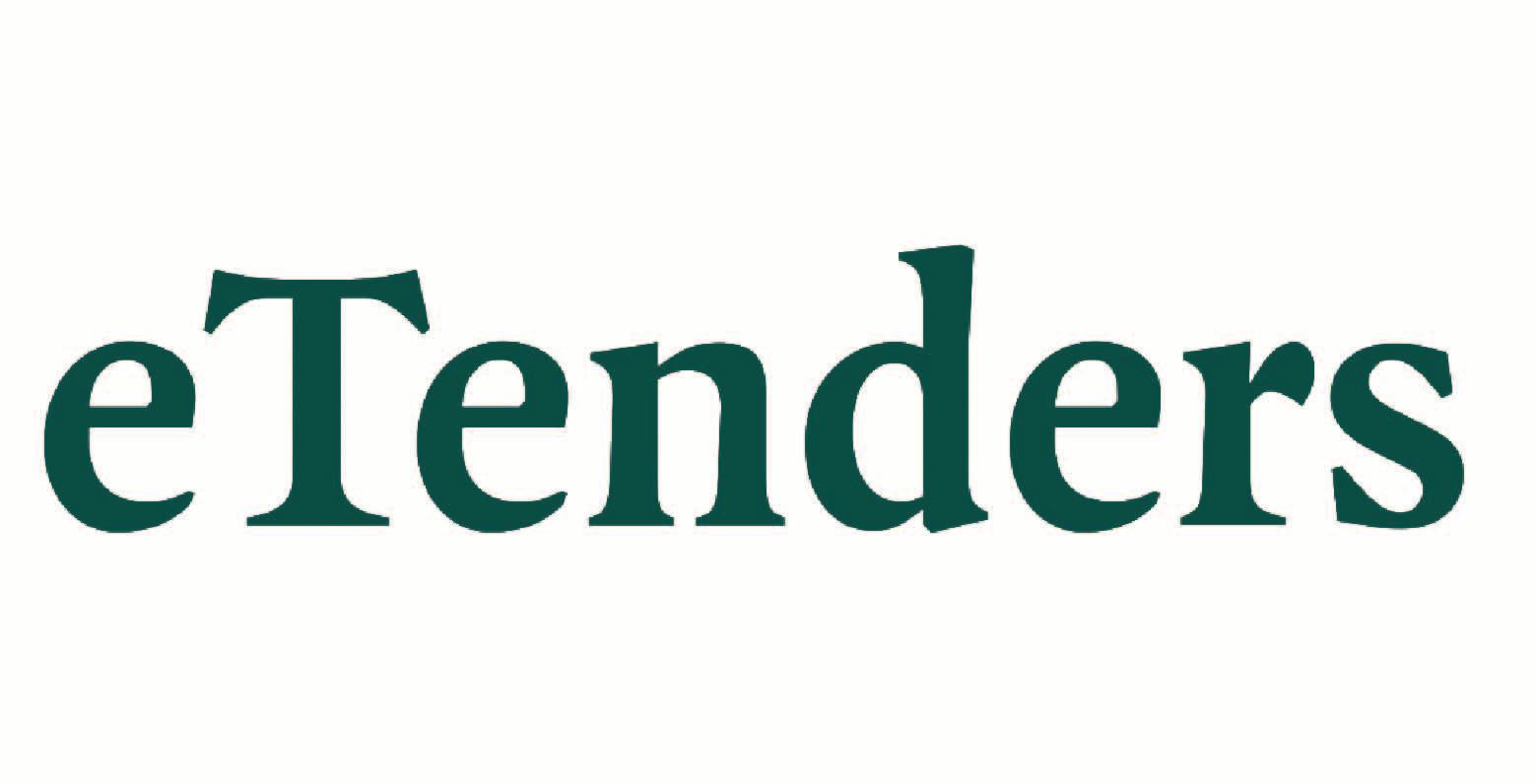
Access to the old eTenders website is ending in May 2024. Public procurement buyers should act now to retain past competition records after this deadline.
In May 2023, Ireland’s national electronic tendering website, eTenders, switched to a different service provider and a new eTenders website was launched.
Public buyers and suppliers have been able to access both the new and old eTenders websites but this is changing soon as access to the old website is ending in May 2024.
The OGP is encouraging anyone who
used the old website to take action now to ensure that they retain the procurement competition files they require. This is particularly important for public buyers.
Each year, thousands of EU- and national-level competitions are posted on the eTenders website. Using the

eTenders website allows public buyers to procure electronically in a way that is compliant with public procurement regulations.
Contracting authorities and public buyers have to comply with data protection, data retention and legal and policy requirements. They are tasked with maintaining appropriate records throughout the purchasing process and beyond.
While eTenders was never intended as a facility for long-term record keeping, over the years, many buyers have become accustomed to the convenience of using eTenders to store and access competition files.
With access to the old site ending soon, the OGP is asking public buyers to take three key steps to save their past competition files before the May 2024 deadline so that they can continue to meet their record keeping and data retention obligations.
Key steps to retrieving data from eTenders
• Step 1 – Close: The first step is to close any procurement competition that you want to retrieve the data for;
• Step 2 – Archive: Closed competitions can now be moved to the archive area on the old site.
Public buyers can set up the old eTenders website to automatically

transfer closed competition files to the archive area after a set period. Company administrators are able to choose the set period that will best suit their organisation’s needs; and
• Step 3 – Download: Once a procurement competition has been closed and archived, you can download the files to your designated storage location. The archive file will include all relevant documentation, such as tender notices, bidder responses, messaging and an audit trail for the competition process.
A detailed guide with further information on how to close, archive and download procurement competition files from the old eTenders website is available, visit gov.ie/ogp
Act now
Public buyers need to act now to ensure they retain the procurement competition files they require after the May deadline.
eTenders is managed by the Office of Government Procurement (OGP). The OGP is the national authority for public procurement and is responsible for driving the public procurement reform programme in Ireland. The OGP is a division of the Department of Public Expenditure, NDP Delivery and Reform.
For further information:
T: +353 1 773 8000
W: www.etenders.gov.ie www.gov.ie/ogp nd Reform.


In April 2024, the Government published and approved its new green public procurement strategy and action plan, Buying Greener: Green Public Procurement Strategy and Action Plan 2024-2027
Replacing the previous national green public procurement (GPP) policy, Green Tenders, which was more than a decade old, the new strategy endeavours to make an important contribution towards attaining national and international sustainability goals.
With government policy aiming to protect the environment and reduce raw material dependence whilst creating more jobs, the growing interest in a circular economy is becoming more apparent.
The Programme for Government (PfG) includes commitments relating to green public procurement and addresses evaluating and managing the environmental, economic, and social impacts of procurement strategies within the State. This includes
developing and implementing a sustainable procurement policy.
As such, the Strategy and Action Plan aims to instigate driving implementation of green and circular procurement throughout the public sector.
The Stockholm Environment Institute published a policy brief addressing the current GPP landscape, stating: “Almost one-quarter of direct GHG emissions in Europe come from the transport sector, and road transport accounted for over 70 per cent of these emissions in 2019.
“Globally, the building and construction sector accounted for 39 per cent of energy and process-related carbon dioxide emissions in 2018.





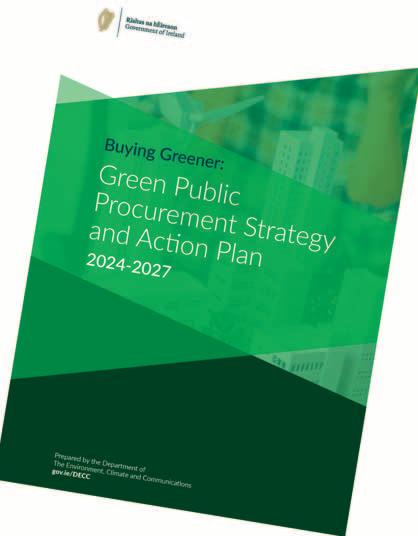

The Circular economy is a model of production and consumption that offers an alternative to today’s linear (‘take-make-waste’) model of production and consumption that helps us move towards a more sustainable future.
One of the key areas of the economy that can play a key role in helping Ireland to become a more resource-efficient is green public procurement. Ireland currently has a circularity rate of 2 per cent with an ambition of a rate above the EU average by 2030.
Procurement in the construction and transport sectors each represent about 12 per cent of the public sector’s total GHG emissions.”
The Action Plan acknowledges the considerable figures in public procurement spending, stating: “Ireland’s material consumption is well above EU average, indicating that there is scope for savings in GHG emissions through maximising efficiency of material use.”
Annual public sector purchasing from the Government accounts for 10 or 12 per cent of the State’s GDP. This would affirm that it plays a large part of economic activity and demand and therefore, implementation of the action plan is essential.
The influence of Ireland’s public sector with green public procurement will actively encourage the provision of more resource-efficient, low carbon, less polluting goods, services, and works across the public sector.
The action plan outlines key objectives for the GPP Strategy and includes:
1. enhancing GPP as a key tool for the public sector in helping Ireland’s transition to a sustainable circular and low carbon economy;
2. ensuring GPP is a core and integral component of the public procurement process and associated governance structures in Ireland;
3. establishing measures to ensure all procurement funds include green criteria where possible;
Green public procurement is a process whereby public bodies seek to procure goods, services and works with a reduced environmental impact throughout their life cycle when compared to goods, services and works within the same primary function otherwise procured.
Consequently, GPP conjointly influences the supplier market. Through promoting and using GPP more systematically, public bodies can provide the public sector with real incentives for developing green technologies and more sustainable products.
4. supporting further development of GPP criteria, enhancing GPP knowledge and expertise and facilitating Ireland’s participation in international collective efforts to use the GPP as a lever for sustainable production and consumption; and
5. supporting market conditions needed to deliver sustainable and innovative solutions for GPP.
Key methods of implementation in the GPP Strategy and Action Plan include measures to progress GPP implementation in the public sector; green public procurement monitoring and reporting; green public procurement training and awareness; and further development of national green public procurement guidance and criteria.
Additionally, the Strategy includes a key sectoral focus with green public procurement targets set out for several areas of public procurement within the economy such as construction, food, ICT equipment, textiles and indoor cleaning services.
Over time, a coherent government strategy on GPP should produce increased demand for greener products and services which will potentially increase competition because of new entrants to the marketplace, therefore potentially reducing prices.
Recognised internationally as an effective means for public administrations, GPP will also manage the balance between Ireland’s cost effectiveness and sustainable development.
Regarding implementation, the strategy and action plan set out how the Government will undertake market engagement, avail of research and innovation, and EU and international initiatives on green public procurement. The strategy also consists of related GPP targets.
An annual review of the GPP Strategy and Action Plan will be undertaken by the Department of the Environment, Climate and Communications to assess the progress and monitor progress, while the establishment of a GPP Action Task Force will further facilitate the coordination of the reviewing progress.
Following the new strategy’s approval, Minister of State with special responsibility for Public Procurement, eGovernment, Communications and the Circular Economy Ossian Smyth TD stated: “This government is committed to making the circular economy a reality which means moving to a more sustainable model of production and consumption.
“Green public procurement will play a key role in helping Ireland become more resource efficient. It will ensure that public bodies play a critical part in supporting the delivery of important commitments on climate action and helping our transition to a circular economy.”
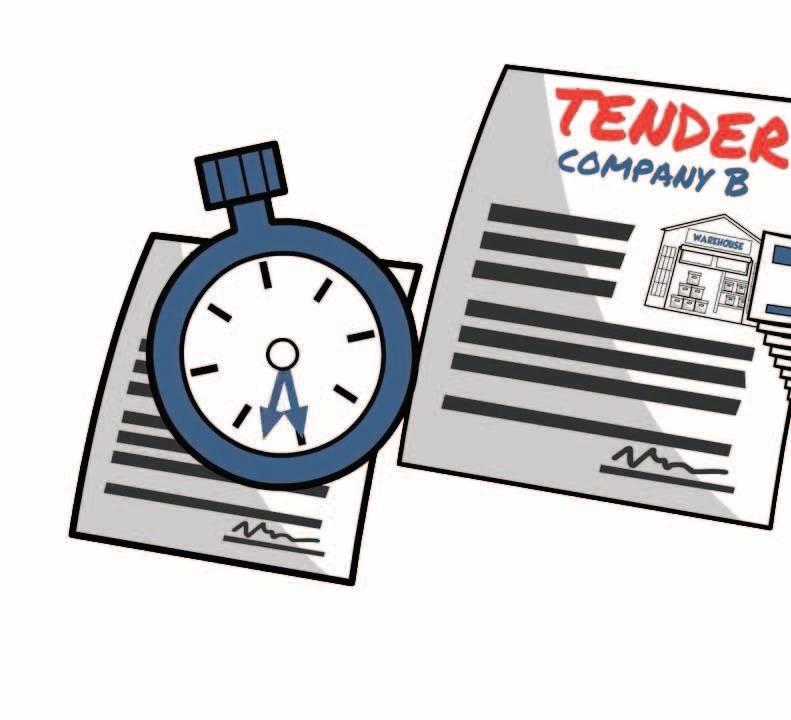
In terms of public procurement, state and commercial semistate bodies face two main pressures. Firstly, they must buy goods and services quickly and efficiently. This allows their organisation to function well. Secondly, they must find the best value for money deals. This is a key goal of the competitive tendering process.
The procurement process must be fair and transparent and public procurement officials would be extremely concerned if they found out that bidders colluded on prices or undermined the process. They aim for fair tendering and want to make sure that outcomes are the result of real competition.
Competition is a shared interest for procurers and the Competition and Consumer Protection Commission (CCPC). The CCPC has a broad remit. As well as safeguarding competition in Ireland and educating consumers on their rights, it also reviews mergers over a certain threshold and detects cartel behaviour, like bid-rigging.


Bid-rigging typically consists of price fixing and/or market sharing, where competitors agree not to compete on prices and/or in certain areas or for certain customers. Bid-rigging is now a specific cartel offence and as such banned under Irish competition law following the enactment of the Competition (Amendment) Act 2022.
Bid-rigging is a serious anti-competitive practice which is seen around the world.
Bid-rigging happens when firms collude and agree not to compete fully for a tender or a contract. As a result, the winning bid is often higher than it should be in a true competitive process. An open and fair competition means that firms reveal the lowest price at
which they are willing to do the job.
Bid-rigging limits choices for consumers. In public contracts, overpaying hurts both citizens and companies. This leads to fewer public services being delivered and taxpayers paying more for those goods and services. The OECD estimates bidrigging leads to overpayments of 20 to 30 per cent for goods and services, a significant waste of taxpayer money. It is also bad for the economy considering annual public spending on goods, services, and works is about €20 billion.
What types of behaviour constitute bidrigging? Some examples include:
• Bid suppression: Firms who would

normally be expected to bid for a contract agree not to submit bids or to withdraw their bids entirely. This results in another party’s tender being selected instead. Removing competitors also means that the incentive to go as low as possible to win the contract is removed.
• Cover bidding: This is also known as “protective bidding” or “shadow bidding”. In these cases, competitors agree to submit artificially high tenders that inevitably will not be selected. This allows for one of the other firms to win the contract. This behaviour creates the impression of a genuine, competitive tender process, but it is never intended for these artificially high bids to be selected.
• Bid rotation: Firms continue to bid but agree to take turns winning business and being the designated successful bidder. Competitors may also agree to take turns according to the size of the contract. These schemes are intricate to avoid detection and to ensure that participants receive their agreed share of the value of contracts.
Public procurement officials are on the frontlines, so to speak. They form the first line of defence against anti-competitive behaviour such as bidrigging. We advise procurers to be vigilant in tender processes. Bid-rigging practices, as seen globally, can be present in any industry where business contracts are awarded by soliciting competitive bids, from carpets and flooring to construction and even bread. So, it is important not to assume it cannot happen in a specific industry.
Procurement officials should watch out for warning signs which might indicate bid-rigging. For example:
• Unusual bidding patterns, such as:
o regular differences between bids;
o a much higher bid by a bidder, compared to its bid on a similar contract; and
o bidders seem to win in certain areas or regions but not in others (i.e. possible market sharing).
• Identical phrases, excuses, spelling mistakes or miscalculations across bidders;
• Correspondence that shows that the bidders have been communicating with each other before a tender;
• Sub-contracting arrangements where the winning bidder sub-contracts bidders who are capable of bidding themselves, but do not actually do so; and
• Expected discounts or rebates suddenly vanish. This happens across all or most tenderers even when there has been common usage of such in the past.
More detail on the warning signs can be found in the booklet titled Bid-rigging what you need to know and checklist Detecting and Preventing BidRigging in Ireland, which are downloadable from the CCPC’s website.
What can you do if you suspect bidrigging is occurring or has occurred?
The CCPC has legislative power to investigate big-rigging and to take action against suspected perpetrators. It welcomes contact from procurers and encourages them to submit as much detail as possible about their suspicions. Also, it offers an anonymous whistleblowing platform on its website. You can provide information on cartel conduct, including bid-rigging, confidentially here. It can be found at https://report.whistleb.com/enGB/ccpc (to remain anonymous, please copy and paste the link in your browser).
In terms of training procurement staff and other relevant officials in public bodies, the CCPC welcomes engagement and can provide presentations on how to spot bid-rigging to relevant individuals. These presentations usually take between 60 and 90 minutes and can take place in person or online.
For further information or to request a presentation, please contact:
E: cartels@ccpc.ie W: www.ccpc.ie nd Reform.



John Coyne, director of commercial and procurement at the Welsh Government, talks about the value and challenges of decarbonising public procurement.
The Welsh Government currently has a procurement expenditure of around £8 billion (€9.3 billion) per annum on procured goods, works, and services and the most recent emissions assessment for the whole of the Welsh public sector showed that the supply chain activities associated with this expenditure makes up 65 per cent of all emissions.
Coyne explains that the Welsh Government is examining cross-sectoral means of reducing carbon emissions. The Climate Change (Wales) Regulations 2021 (March 2021) brings Wales inline with the UK net zero 2050 target. This was an amendment to the Environment (Wales) Act 2016 that set an 80 per cent emissions reduction target by 2050.
Like Ireland, the Welsh Government measures targets and carbon budgets against the baseline year of 1990 (although some gases can only be
examined from 1995) established in the Environment (Wales) Act 2016.
The legislative commitment to net zero by 2050 is supported by a collective Welsh public sector net zero by 2030 ambition, set out in the Net Zero Carbon Status by 2030: Public Sector Route Map, published in July 2021.
Although reducing emissions from procurement presents significant challenges, Coyne is optimistic, stating: “Supply chain activities can be influenced by the purchasing organisation’s procurement processes, specifically procurement strategies, which give us insights as to how we approach the market; how we specify requirements; evaluate tenders and set KPIs; and by ensuring the anticipated outcomes are delivered through our contract management relationships.
“We are very much on a journey in Wales where we need to up our pace and we need investment to do that.”
John Coyne, Welsh Government
“We can go further by planning our future procurements to incentivise continuous improvement and innovation over the period of the contract.”
At the heart of Coyne’s argument is that there is a need for “considerable step change around how we work with our supply chain” for the private sector to be incentivised, rather than feeling coerced, into decarbonising their procurement, which will lead to decarbonisation across entire supply chains.
“If you want to make big targets like that you need to fundamentally change the way we engage with our supply chain and we have to fundamentally change how we support our supply chain,” he says.
“If we are expecting SMEs to invest £10 million in becoming much more carbon neutral, they will not do it because the reality of life is that their goal is to keep people employed and make a small profit to reinvest.”
Arguing that suppliers are currently sent a very strong signal but not sufficient in terms of how they can reduce their carbon output, Coyne states: “We can send as many strong signals as we wish, but if we need to recognise that sometimes, support is not just about issuing new regulations, sometimes support comes from an investment.”

On meeting the necessary investment for decarbonising procurement, Coyne says that the Welsh Government is “currently in a very difficult position in relation to its budget”.
“We are not investing in our suppliers to actually back up the strong signals that we have been sending them. It is a piece of work that we must do as we go forward.”
Although there are cost challenges, Coyne praises the role played by the Welsh Government’s business support unit, which he says is “highly effective at targeting support and skills development within the supply chain”.
However, he nonetheless is realistic on progress made so far, outlining: “We are only scratching the surface so far and we really need to invest in this area. That is a particularly common theme that comes into my discussions with ministers.
“We are tinkering around the edges, we are making very bold statements like the need for net zero by 2030, and you just have to have an element of honesty in the room.”
Reflecting on Wales decarbonising and procurement journey, he concludes: “We are very much on a journey in Wales where we need to up our pace and we need investment to do that, so watch this space.”
John Coyne has been the director of commercial and procurement at the Welsh Government since September 2020. In a career spanning four decades, Coyne has held leading corporate roles at companies including Irish Ferries, Stena Line, and Liverpool Football Club.
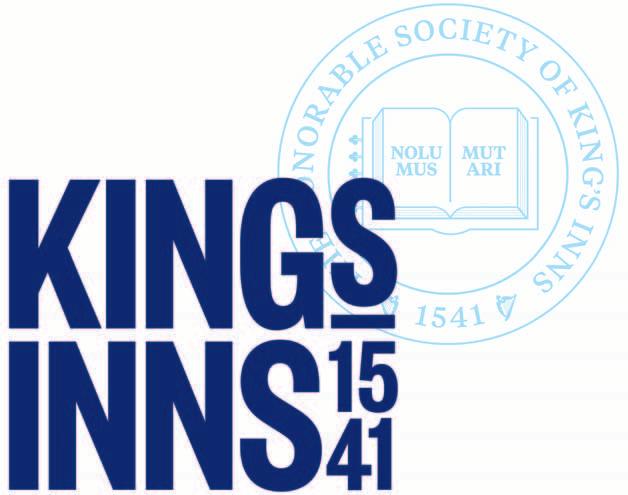
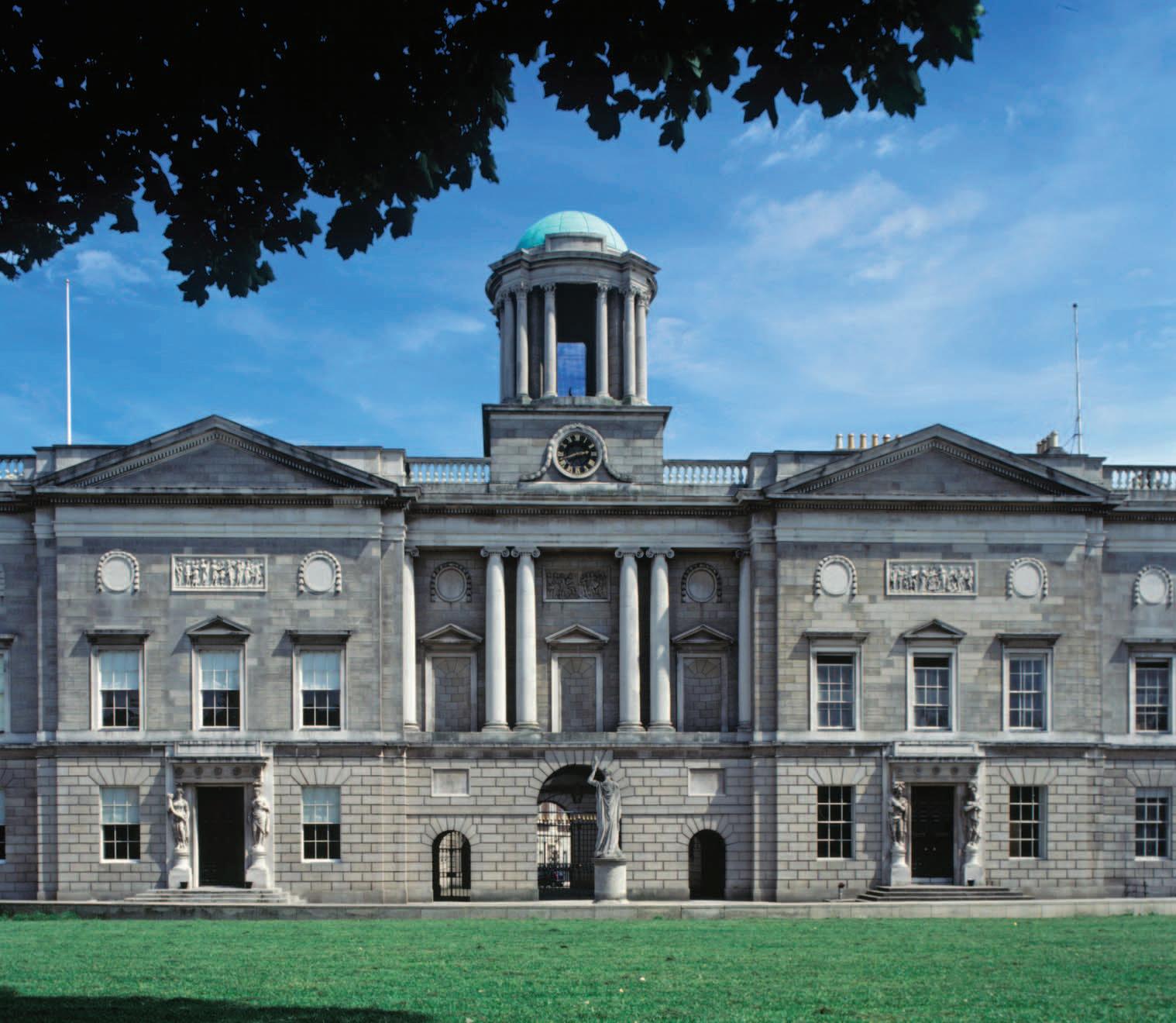
Public procurement is an attractive career path with lots of room for advancement and the chance to truly impact the lives of others.
Procurement is a critical function in any public sector organisation, and those who work in it have many prospects for both personal and professional growth.
While the European Union (EU) public procurement regime has long been in place, it has received greater prominence in recent years, in particular, following the introduction of the remedies regime in 2010, and the automatic suspension of the conclusion of a contract following a challenge.
Public procurement is also central to the internal market and the EU procurement rules have been reformed, with three new directives adopted in 2014 and implemented in Ireland in May 2016. There is a significant volume of CJEU (Court of Justice of the European Union) case law in this area, as well as an expanding national jurisprudence. It is an important and rapidly evolving area of law.
The Public Procurement Law professional development course offered by King’s Inns will provide participants with a comprehensive and practical knowledge of the public procurement regime, and will address a range of issues in depth, from invitations to tender, to conducting the various procurement processes, selection of tenderers, tender evaluation, contract conclusion and procurement litigation.
Participants will also acquire an understanding of how procurement can be used to achieve innovation and promote government policies.
Participants will have a thorough grounding in the differences between the utilities and public sector regimes, and the intersection between procurement law and competition, state aid and intellectual property.
On completion of the course, you should be better able to:
• examine the legal framework in which public procurement operates and the applicable rules;
• identify situations which may give rise to procurement litigation;
• describe and explain current legal issues affecting the tender and evaluation process;
• describe and explain key provisions and case law affecting this area; and
• apply knowledge to factual problem scenarios.
The course will appeal to procurement professionals, public sector and utility employees, academic and government researchers, industry, policymakers, legal practitioners, regulators, and judges. It will also appeal to all
businesses that undertake big or small public and private contracts.
This course takes place in an online format only, live via Zoom, with recordings of lectures available after class is over. The course takes place over approximately 18 weeks from October 2024 to April 2025, with lectures on Wednesdays from 8.30am to 10am.
Previous students have found the course particularly beneficial in terms of having a diverse group of professionals studying this course together. It allows participants to learn from each other, especially during tutorials and Q&A sessions:
Course content:
• Introduction to public procurement law;
• The scope of the public procurement rules;
• Procedures, contracts and drafting the tender documentation;
• Conducting a lawful process I + II;
• Intersections between public procurement and competition law;
• Innovation in public procurement and intellectual property;
• Sub–threshold contracts;
• Contract conclusion;
• Frameworks;
• Procurement in the utilities sector;
• Public procurement and secondary policies;
• Public procurement litigation I + II;
• Transparency in public procurement;
• Public procurement: A view from the Bench; and
• Seminar: Practical problems in procurement.
King’s Inns courses are led by Ireland’s leading practitioners and academics, barristers in practice, and other qualified legal professionals.
The designers and lead lecturers of the course are barristers Catherine Donnelly and Michael Judge.
Donnelly is one of Ireland’s leading procurement practitioners; she specialises in data protection, public procurement, competition, regulatory and European law. Judge specialises in European law and practices in administrative law, commercial/chancery, general practice, and judicial review.
“I would highly recommend this course to anyone working in
public
procurement. Lectures
had excellent content, especially in terms of the depth of information supplied, based on procurement case law, application of legal frameworks, and relevant directives.”
2022 graduate

David Barniville
Eileen Barrington
Aoife Beirne
Aaron Boyle, Partner, Arthur Cox
Kerri Crossen, Partner, Philip Lee
Anna-Marie Curran, Partner, A&L Goodbody
Joseph Dalby
Application deadline: October 2024
Course Start Date: October 2024
Course Fee: €2,550
Apply here:
www.kingsinns.ie/education/coursesopen-to-lawyers-nonlawyers/advanceddiploma-in-public-procurement-law
There are no admission requirements for this course. A place on the highly sought–after course is not secured until the tuition fee is received in full. Once payment is received, you are automatically accepted on the course.
Catherine Donnelly
Nathy Dunleavy
Joanne Finn, Partner, DAC Beachcroft
James Kinch, CSSO
Patrick McGovern, Retired Partner, Arthur Cox
Audrey Murtagh, CSSO
Jonathan Newman
Keep an eye on King’s Inns website for more information on the application and course start date.
T: +353 (0)1 874 4840
E: admissions@kingsinns.ie W: www.kingsinns.ie

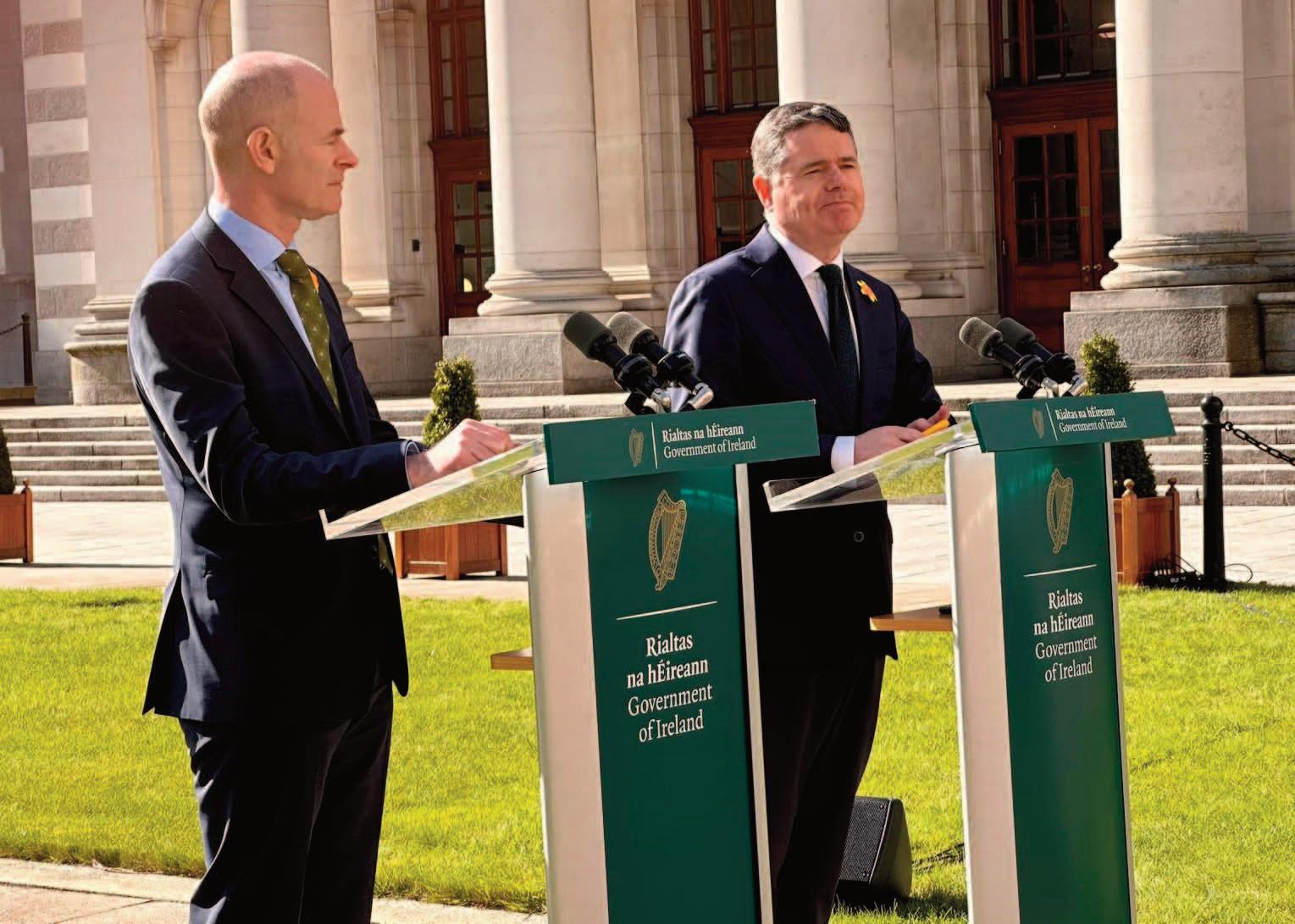
The Department of Public Expenditure, NDP Delivery, and Reform (DPENDR) has said there are “no immediate plans” to establish a central arrangement for Infrastructure as a Service (IaaS) following an “extensive consultation process”.
Minister of State at the Department of Public Expenditure, National Development Plan Delivery and Reform with responsibility for public procurement and eGovernment, Ossian Smyth TD, believes that cloud technology can be used to streamline public procurement practices.
Following a detailed of analysis of public service demand for cloud services, the Office of Government Procurement (OGP) had intended to establish a central arrangement for Infrastructure as a Service (IaaS) by Q4 2023.
In September 2023, OGP published a tender competition to establish a central arrangement (contract) for IaaS at
an estimated value of €60 million which could be availed of by all public service bodies.
However, amid a dearth of applications, the tender for the public sector cloud computing contract was withdrawn by January 2024.
A spokesperson for the Department of Public Expenditure, NDP Delivery and Reform told eolas Magazine: “After an extensive market engagement and consultation process, the OGP published a tender competition last year which closed on 3rd November 2023. While 13 tender responses were received, there were not enough compliant tender submissions for the
OGP to establish a multi-supplier central arrangement for IaaS.”
The spokesperson continued: “There are no immediate plans to run a new competition and for now, use of the public cloud will continue with each requirement being assessed on its own merits using a risk-based approach.”
Úna Fitzpatrick from Ibec’s Technology Ireland criticised the contract as “unworkable” due to “fundamental difficulties”.
“The framework’s potential risks to its viability and the resulting reputational impact on Ireland remains a serious concern. If this process proves unsuccessful and fails to secure the participation of the majority of... providers currently involved with public sector customers, Irish public sector bodies could be left without an efficient means to procure the services necessary to advance their respective digitalisation ambitions,” she said.
Speaking with eolas Magazine in January 2024, AWS’s Head of Public Sector for the Republic of Ireland, Mark Finlay, commented: “While it is unfortunate that that [the conclusion] has not achieved a successful outcome, we do believe that there is a pathway towards getting a framework that works in a compliant manner for Irish public sector bodies.
“Continuing to engage with the Office of Government Procurement and the Irish Government in delivering that framework is an absolute priority for AWS, as well as working directly with public sector bodies to allow them deliver on their cloud transformation strategies.”
The first milestone informing the delivery of a new IaaS central arrangement was a market consultation on the contractual terms and conditions that would apply.
Welcoming the consultation in February 2023, the American Chamber of Commerce Ireland (AmCham) had praised “the progress that is being made on the Programme for Government’s promise to direct the OGP to support the adoption of new technologies through the development of new public service frameworks”.
The Department of Public Expenditure, National Development Plan Delivery and Reform has stated that digitalisation of public services is a key priority for the Government. The national digital strategy, Harnessing Digital – The Digital Ireland Framework, aims to drive and enable digital transition across the State’s economy and society.
Connecting Government 2030, the digital and ICT strategy for the State’s public service, further outlines the Government’s ambition to be regarded as a European leader in Digital Public Services. Adoption of cloud services is regarded as a key enabler of this digital transformation ambition.
In a written response to Paul Kehoe TD regarding the importance of cloud in the digitalisation of public services, Minister for Public Expenditure, National Development Plan Delivery and Reform Paschal
Donohoe TD outlined: “The use of cloud computing continues to be a key and growing platform supporting the delivery of innovative, modern digital public services.” Though he also emphasised: “Of course, a cloud-first approach does not mean cloud-only.”
The new arrangement aims to support public service bodies in their adoption of cloud services through providing easy access to the best available on demand and scalable compute, storage and networking IaaS solutions. The tender process concluded at the end of 2023 with ambitions further outlined for the subsequent central arrangement to be available “shortly thereafter”.
In April 2024, the Government launched the Green Public Procurement Strategy 2024-2027, which aims to drive green public procurement practices in government department and agencies.
If cloud technology is integrated into procurement practices, the potential exists for the enablement of these green ambitions as cloud computing allows for maximised return due to the efficiency of features such as virtualisation and dynamic scaling. This would reduce idle capacity and energy waste.
The Office of Government Procurement is currently building its data retention capacity, from which there is an ambition for data analysis to be used in order to establish best practices. Use of cloud in the procurement data process is further cited by procurement experts as contributing to the green agenda through reduction of paper use and ability to improve rates of remote working in the procurement sector, both of which result in reduced waste and reduced emissions in other sectors emanating from procurement, such as transport.
Speaking about the prospective new arrangement upon the launch of the consultation, Minister of State Ossian Smyth TD said:
“With cloud technology, the State rapidly delivered vaccination and test scheduling and contact tracing services during the pandemic. These systems proved resilient during the HSE cyberattack in 2021. Now, outside of a crisis, the State needs this technology to offer rapidly scalable public services.
“OGP has launched a ground-breaking competition, which will enable public bodies to digitise the services that they offer. The new central procurement arrangement will enable these bodies to procure IaaS solutions in a way that is compliant with all relevant regulations and is efficient and easy to use for both buyers and suppliers.
“Cloud service providers have long sought a central procurement arrangement for cloud services and I acknowledge the market’s engagement with this consultation process with OGP that preceded this competition.”




Philip Gurnett, Director of Education Procurement Service in the Department of Education, discusses the development, deployment, and value of multiannual procurement plans and centralised frameworks.
Highlighting the significant strides made in securing forecasted savings, the Education Procurement Service (EPS) has achieved approximately €67 million to date through the implementation of the National Procurement Model in Education. Underpinning this success is the EPS Change Management Strategy, a testament to the diligent efforts in revolutionising procurement practices within the educational landscape.
Central to this transformation has been the meticulous implementation of the model across various educational institutions. Reflecting on this accomplishment, Gurnett elucidates how EPS conducted a strategic review, leading to the development of a comprehensive program aimed at further refining and delivering the core principles of the model.
Drawing inspiration from the Better Public Services strategy 2030, published by the Department of Public Expenditure, NDP Delivery and Reform in May 2023, EPS has embraced the overarching principle of digitisation to streamline processes and foster a culture of efficiency.
“We cannot just step up and improve the way we respond, we have to be more efficient, more productive, and work in a smarter way.”
Philip
Director
Amidst the diverse educational landscape encompassing universities, technological institutions, and primary/secondary schools, EPS endeavours to ensure adaptability in implementing change across sectoral partners. Gurnett emphasises the importance of collaboration and leveraging central frameworks wherever feasible to optimise procurement resources effectively.
A cornerstone of EPS’s strategy lies in Multiannual Procurement Plans (MAPPs), which serve as the linchpin of the supply chain model in education. These plans, completed by major institutions, facilitate comprehensive insights into procurement positions, foster engagement with central procurement bodies, and provide crucial reporting mechanisms.
Harnessing the wealth of data amassed through MAPPs, EPS facilitates seamless information exchange between educational sectors and the Office of Government Procurement (OGP), with a view to crafting future frameworks tailored to meet evolving needs comprehensively.
At the heart of EPS’s endeavours lies the development of an ecosystem fostering collaboration and innovation within procurement across educational and public sectors. Gurnett envisions this ecosystem as a catalyst for bottom-up procurement solutions, driven by enthusiastic engagement and shared experiences among stakeholders.
Despite notable achievements, Gurnett acknowledges persistent challenges, notably the significant portion of procurement expenditure managed at individual institution
levels. Through ongoing analysis and engagement, EPS remains committed to enhancing the uptake of centralised procurement arrangements, thereby optimising resources, and maximising efficiency.
In light of the considerable procurement activities undertaken by institutions, it is crucial to assess how items will be categorised and sourced in the future. Analysis conducted by EPS reveals that a significant portion of expenditure is either tailored to the specific needs of education or constitutes a substantial portion of educational spending. Establishing a national framework solely for educational requirements becomes impractical due to this unique nature of expenditure. Consequently, the onus falls upon the education sector and EPS as the central procurement body to develop sector-specific arrangements for a significant portion of this procurement, thus aligning it with the central model.
Looking ahead, digitisation emerges as a pivotal strategy in elevating procurement processes, with 84 per cent of EPS’s strategic projects centred around digitisation initiatives. By embracing digital solutions such as edelivery, analytics, and enhanced communication channels, EPS aims to revolutionise procurement practices in alignment with government policy.
In conclusion, Gurnett underscores the imperative of sustained innovation and efficiency in steering transformative change within the education procurement sector. Embracing a smarter, more productive approach is paramount in navigating the evolving landscape of procurement practices.
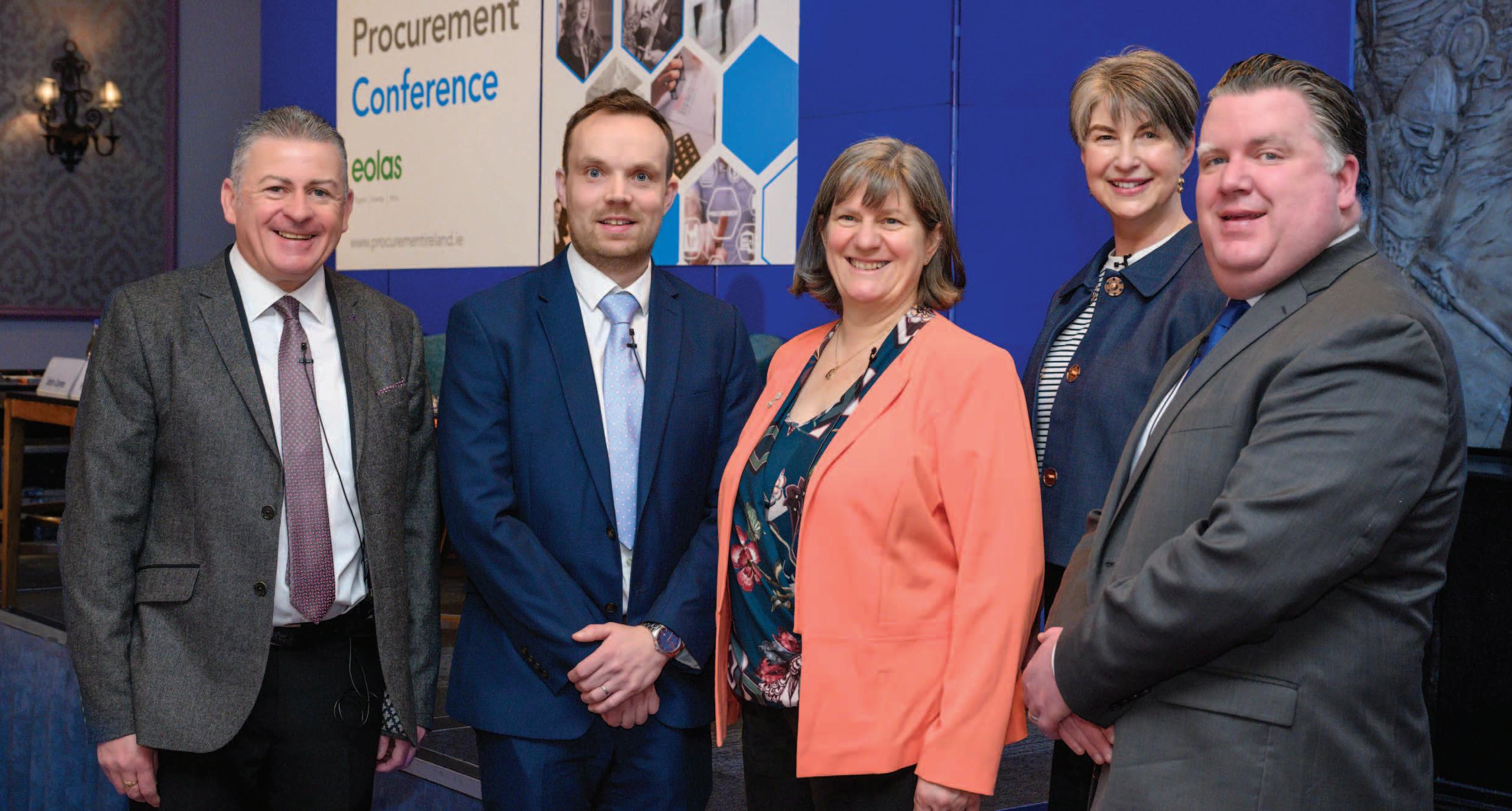
The Public Procurement Conference 2024 took place on Thursday 14 March at Clontarf Castle Hotel, Dublin. Around 100 delegates attended the event which was sponsored by AWS and opened with an address from Anne Lannon, Office of Government Procurement.
Delegates in attendance heard from 10 speakers, both visiting and local, from organisations including the Health Service Executive, the Welsh Government, The Housing Agency, ESB, Stockholm Environment Institute, and Iarnród Éireann.


